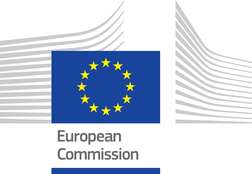1. Information about the procurement
ICT Solution: Digital Elevation Models (DEMs)
Digital Elevation Models (DEMs) are used in a wide range of applications (nautical charts, dredging operations, morphological analysis, habitat maps and numerical modelling). In coastal areas, where land and water meet, the elevation of the earth’s surface cannot be measured with one single technique. The depth of the seafloor is measured using echo-sounding from a waterborne platform. In Flanders, 5-6 vessels need to sail out to fulfill the demand on seafloor elevation. The height on land is acquired using airborne laser-scanning. These surveys are executed on average once a year in Flanders. Merging of data from both sources is needed to produce seamless Digital Elevation Models (DEMs) in coastal and estuarine areas.
The current practice has some limitations. Survey areas are limited by what is feasible within a single survey day. Consequently, large areas need multiple survey days (up to weeks) with eventually multiple survey vessels and certain areas have a low revisit frequency (up to multiple years). It is clear that data acquisition and processing are costly and labour intensive. Even more efforts are needed to adequately cover the intertidal part of coastal areas. Bathymetric surveys need to be scheduled at high water, resulting in slower acquisition rates. Laser-scanning surveys need optimal weather conditions and need to be scheduled at low water. Combining both survey results into a single map covering the area of interest is complex and adds to the costs of data acquisition.
Technological developments in different areas (space- and airborne techniques, novel acquisition platforms and advancements in signal processing) are expected, but may only deliver partial solutions or require R&D investments on the long term. A solution in which remote sensing data is linked with existing laser-scanning and echo-sounding surveys and to advanced modelling techniques seems promising.
Thus, the goal is to design and develop an innovative technique to produce a DEM/DTM of entire coastal areas integrating (existing) multi-sensor data and making use of advanced signal processing methods. This is an ambitious goal aiming at a breakthrough innovation. It will be necessary to reinvent the survey strategy and to develop novel processing techniques.
Key technologies:
- Remote sensing data linked with existing laser-scanning and echo-sounding surveys and advanced modelling techniques.
- Content technologies and information management (e.g. big data handling, content handling and modelling, automatic learning)





